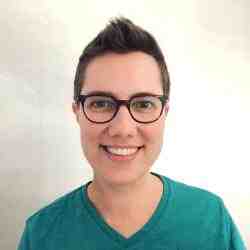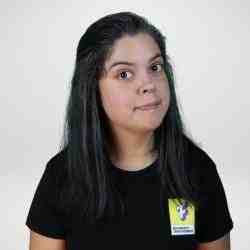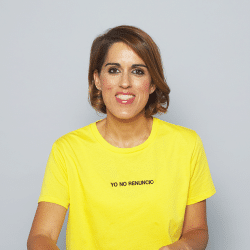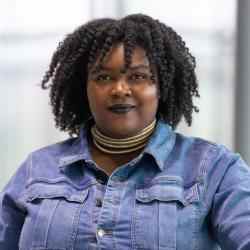Real Pearl Foundation / Igazgyöngy Alapítvány
https://www.igazgyongy-alapitvany.huIntroduction
Nóra Ritók works to break the cycle of chronic entrenched poverty that has devastated rural populations and marginalized communities throughout Hungary and much of Central Europe. Initially engaging young people through an innovative afterschool Academy, Nóra’s Real Pearl Foundation builds bridges to their families and wider communities to become full participants in mutual self-help initiatives addressing their social, psychological and economic needs. The goal is to foster communities of active agents embarked on a collective process to transform the habits, attitudes, practices and understanding of people and institutions who traditionally do not collaborate, including children, parents, teachers, police, and representatives of social welfare and other public service agencies.
The New Idea
In a country where nearly 1 in 5 children grow up in a family where neither parent works, and 20% of children are functionally illiterate, Nóra Ritók realized early in her career that drastic reforms were needed to create opportunities for impoverished families, most of whom reside in rural areas of Hungary and Central Europe. Confronting poorly resourced state institutions, from schools to social welfare agencies, that were unable to respond effectively to the chronic poverty in their midst, Nóra set out to create concrete models outside of the government structures. These engage and inspire families and communities to become active agents of change in their lives, and build awareness and support for transforming the state and nongovernmental programs, institutes that were designed to serve these populations.
In order to overcome the generational cycle of isolation, suspicion and lack of opportunity facing communities in rural Hungary and beyond, Nóra began working with young people, setting up an afterschool Academy (now in 7 locations) that captured their imagination and interest through collaborative learning programs creatively mixing arts with other school subjects. The success of the Academy created a channel to work with families in the community, with Real Pearl’s staff of local change agents entering into a dialogue and ultimately becoming engaged in mutual self-help programs conducted in new community centers sponsored by Real Pearl across towns and villages in the region. These programs are collectively managed with strict peer accountability systems, requiring commitment and participation to gain access to the services that meet the social, economic and health needs of families in the communities.
Nóra and her team is actively documenting and analyzing their work with the 16 settlements. So far significant progress has been made in kids’ school performance and competency development based on their individual development plans tracked by the teachers of the Academy. Since 2009 adult literacy increased by 50%, average family income levels rose by 25%, while around 80% of the inactive population got active by at least getting involved in temporary job opportunities. The morale of communities tangibly improved as there is regular collaboration and social interaction between its members, aggression levels dropped, while child prostitution and teenage pregnancy are completely eliminated. The strength of cooperation between state institutions and helping organizations grew from lack of direct communication to attending weekly problem solving meetings, thus successfully solving 40-50 family/community problems case by case.
The success of the approach and the many innovative techniques in both the Academy and the community self-help programs has opened the doors to work with schools, universities, local governments and social welfare agencies across Hungary and increasingly internationally, who have come to Nóra for assistance. Nóra and her staff work with educators, case workers, administrators and others to build understanding of both the realities of the lives of the populations whom they seek to serve and concrete methods to incorporate into their daily work. The Oulunkylän Primary School from Helsinki, one of the oldest partner schools of Real Pearl not only adopted its education curriculum but is now implementing the community building program to overcome discrimination and bring local people closer to the growing number of migrant populations. The Association of Hungarian Pedagogues of Slovakia connecting over 50 preschools and 200 elementary schools accredited a complex teacher training program hosted by Real Pearl to equip teachers with tools to motivate children coming from poor backgrounds for studying and collaboration. In 2014 Nóra was a guest speaker at the German Child & Youth Welfare Congress, the biggest event as such to transfer the knowledge about her self-help program and start the planning process of its use with different ethnic groups of Germany.
These attempts are supported by broader public awareness efforts spearheaded by Nóra, including her blog on poverty issues, which is the most read platform on the topic in the country, regular speaking engagements, and work with universities, especially teacher training programs. Currently more than 100 Hungarian public schools use Nóra’s education method and 50% of the 200 teachers taking part in their trainings get their attitude changed permanently year by year.
The Problem
The correlation between a child’s economic status and their school performance is the strongest in Hungary from all OECD countries, illustrating the inability of the education system to compensate for children’s family background. Public education is tailored to middle class kids with outdated curriculums mostly focusing on tests and statistics. It neither acknowledges the different needs of children coming from rural areas, nor provides the skills/tools for teachers to be able to answer those needs. The 23% of Hungarian children living in poverty face systemic challenges, repeatedly experiencing failure, low self-esteem and discrimination. Teachers of students from impoverished communities feel helpless and disempowered to address those challenges early on, often stigmatizing the “problematic child” and hardly reaching out to parents to find complex solutions together. Primary education too often fails to nurture the skills and competencies, such as collaboration and creativity, required by the labor market. As a result the high percentages of youngsters who drop out early from school don’t possess the necessary skills required by employers, and usually fall into chronic unemployment caught in a vicious cycle of poverty.
Every fifth Hungarian child lives in a family where neither parent works. These parents are often fully dependent on social welfare, are frequently in debt to money-lenders who charge usurious rates, and lack the skills and motivation to break out from their condition. The lack of economic growth in the country means there are fewer opportunities for rural populations, especially for the unskilled and illiterate, which results in unemployment rates as high as 98% in many villages. A further challenge to improving chronic poverty in those rural areas is the high concentration of Roma populations, who have historically been discriminated against and excluded from the Hungarian and many European societies. Whether for the Roma or non-Roma alike, the conditions of chronic poverty in rural villages and towns are manifested in numerous social pathologies, high rates of alcoholism, prostitution, criminality and generally poor health. Citizens in these communities feel demoralized, lacking empathy and self-confidence, and are often suspicious of others with little trust in neighbors or social institutions. These poor communities constantly experience discrimination against their social, economic and racial backgrounds reinforced by the distorted image of the media and public perceptions that lack appropriate information on their actual conditions.
The support system that could address the challenges of structural poverty is barely functional. Institutions that should cooperate and strengthen each other are working in silos. Services are either fragmented or duplicate themselves instead of effectively dealing with the reality of social needs. There is lack of communication and understanding between service users and providers. Service providers regularly discriminate against the marginalized people they are established to serve, sometimes even refusing to help and unwilling to change their stereotypes of the chronically poor as dependent and passive. They wish to offer one unified solution for everyone rather than digging out the root cause of problems. Too often community members, who need the services of these institutions, are unfamiliar with how public institutions work and have false expectations. They are often impatient with administrative bureaucracy and arrive unprepared for appointments. This tension between parties is a frequent source of conflict. Many agencies and government entities may wish to help, but because they are not truly familiar with the realities and needs of people in poverty, their work ends up accentuating the dependency culture within local populations, who then cease to become active agents in their lives.
The Strategy
Nóra’s approach to social integration evolved out of her deep personal experience as an educator and resident of communities in Hungary that were deeply impoverished. In launching an independent Academy, she identified programs that give students from poverty-stricken backgrounds and failing schools a dramatically different experience, one creating agency and opportunity for them, whose lives have been devoid of both. One in which they could succeed and perceive themselves as creative, succeeding individuals, not just within their community, but among their peers nationally. To equip these youngsters with initial early successes, Nóra saw that an afterschool visual arts program integrated with cooperative learning strategies could be the right instrument. This program builds both practical skills and overall social competency, such as problem solving, self-awareness, emotional intelligence, cooperation and tolerance. The Academy has pioneered a number of influential teaching methodologies, which although begin in visual arts have been applied across disciplines of grammar, history, geography, biology, foreign language, holocaust and environment education in the institution and outside.
To satisfy the huge demand for her afterschool services – 1 in 4 kids attending regionally - Nóra now offers courses in 7 different venues. The Academy is the only school in Hungary that uses narrative student assessment enabling teachers to track and measure the skill-development of kids. Empathy metrics are included in the teacher and school performance standards where they can rate their contribution to the improvement of the Academy’s social and emotional well-being. Nóra established a scholarship fund as well, which both acknowledges and rewards recipients’ performance in public schools and serves as an incentive to others. With the help of online communication tools the Academy engages student volunteers from big cities as mentors of rural kids. Another key element of the Academy, which works both to inspire children and to engage their parents, has been the use of public exhibitions of children’s work and just as importantly entering their artwork in national and international competitions, where students have a remarkable track record winning over 500 national and international prizes a year.
By serving as a vehicle for social inclusion, the Academy became a gateway for working with families confronting decades of chronic poverty. In order to active these people as changemakers transforming themselves and their communities, Nóra first builds trust in them, cultivated initially by the pre-existing relationship with the Academy. Central to her approach is nurturing a core leadership team from the community that engages other families. Having developed the relationships with potential leaders from within the community, Real Pearl establishes a dialogue from which the needs of and opportunities for the families in the surrounding communities can be mutually identified. Then they build customized strategies based on these analyses. Real Pearl’s complete engagement strategy offers three types of services: crisis management (provision of food, housing, clothing, debt management, contraception, drug prescriptions, etc.), training in literacy, technical and other traditional skills (designed with self-efficacy in mind) and specific work related training opportunities for local business initiatives. The Foundation provides small scale work and crafts activities to introduce parents to the labor market and give opportunities for easy wins. These ventures are for income generation (making furniture, growing medicinal plants, or embroidering textile products) and self-sustainability (producing biobriquettes, farming, gardening or repairing building insulation).
All participation in the services which emerge from the initial analysis is conditioned to participation in work and community programs. There is a follow-up list maintained by the local leadership team, which is transparently hung on the wall of the community centers that Real Pearl operates to show who took part in which activities. The tough love approach works to nourish accountability in many ways. To engage and receive services from the program - as well as scholarship for the kids - all families must sign contracts. These contracts guarantee, for example, that a spending plan is put together with the Foundation to ensure the scholarship money is spent wisely or donations are not being resold.
Having engaged a critical mass of families, Nóra and her teams begin the community building process in cooperation with community leadership teams. They set up weekly meetings in the community center to discuss norms, rules and directions and forge strong human connections. This participative approach is based on empathy, mutual respect and changing anchored patterns. Instead of forcing community members to do what the government or other external actors think they should be doing, the Real Pearl Foundation approach is to aid communities in building an efficient community governance model that sets their own priorities, allocates resources, resolves conflicts and fosters collaboration. The Foundation is essentially building social capital in communities so that new constructive elements can develop to lead the way.
In parallel with the work with families in the community, Nóra also works with teachers and principals of local public schools to become partners and align their efforts when engaging parents to change for the benefit of kids. The results have been positive with teachers across the region becoming more socially attuned to the realities and needs of the children whom they serve, and proactively asking for the Foundation’s support to solve problems together. Nóra regularly organizes teacher trainings in the country and abroad to develop their empathy skills and sensitize teachers to challenging family relations and living circumstances. She collaborates with numerous universities in delivering lectures and engaging volunteers, interns with her work. To date, Nóra and her foundation have published 12 textbooks and manuals about the method. In addition to her blog, Nóra also contributes to various other open-source education platforms.
Fostering collaboration among public agencies is crucial to Nóra’s work. She began by inviting representatives from public agencies to attend a series of roundtables with representatives from the local community. There, they would discuss their challenges with other organizations and with the community. Then, having established a stable relationship in the course of discussions, Nóra switches to weekly case-by-case problem solving meetings with every stakeholder to update each other and define the necessary next steps with the engaged point persons. The spectrum of organizations involved in this collaborative work includes local and national authorities like the police, mayor’s offices, preschools, family doctor services, health visitors, the child protection agency, the community service program and family help centers.
At the national level, Nóra works on influencing the public opinion and the policy making process to combat social exclusion and eliminate stigma. She is part of various national committees such as the Antidiscrimination Roundtable. Nóra has been central in generating a society-wide discourse in Hungary challenging stereotypes around marginalized kids and communities by using the multiplication effect of her media strategy drawing on her blog, a network of journalists, social media channels and movies. The Foundation has become a national resource for interested parties who come for shorter or longer site visits to learn from and get involved in the work and adapt it to their realities.
With frequent visitors coming to observe Real Pearl’s work from outside of Hungary, the approach has already expanded beyond the country’s borders in the Hungarian diaspora in Slovakia, Romania, Slovenia, Croatia and Serbia, while also in Scandinavia, Portugal, India, Italy and other countries. Programs in Norway are adopting elements of her approach for the integration of migrant communities. In Serbia schools are using the methods to create more inclusive educational programs. With the growing prominence of Nóra’s work, she has been invited to represent social integration in EU level policy dialogues.
The Person
While her parents worked day and night and played an active role in the community life as volunteers, Nóra was raised by her grandmother. She was a role model for the young girl with her intrinsic empathy and natural ability to bring the rural community together. Being inspired by these early childhood experiences, Nóra joined the Red Cross movement to train peer supporters and bravely saved lives with her remarkable first aid knowledge. She was an outstanding student at school who took the lead both in class and in the pioneer movement.
Recognizing the great value in nurturing children to fulfill their potential, Nóra studied geography and visual arts pedagogy. At college, she realized how outdated the education system was and tried to convince her professors to change their teaching methods, but was disregarded several times. Upon completing her internship (a requirement of her degree program), her supervisor warned Nóra to use the traditional curriculum and stop innovating, otherwise she would face many difficulties in her career. This was a real turning point for Nóra, who wanted to prove she could change this antiquated way of thinking.
After giving birth to her two children, Gábor and Anna, Nóra began to teach at a rural primary school. At this early stage of her career, she recognized that the long term transformation of rural communities would depend upon transforming young lives. Initially her work focused on restructuring public education in the public school in which she taught to considerable success. Eventually, an administration change resulted in the gutting of her reform efforts and Nóra resigned. In the early stages of her work with the Real Pearl Foundation, she realized she had two choices, either to return to existing state institutions or to launch her own institution, letting it serve as a laboratory for how to teach and engage young people, and in turn their families and communities. Nóra chose the latter.
In 2000, she founded the Real Pearl Academy to transform kids to be active learners, to see themselves as capable of success, as equal to others in the larger context of Hungary and beyond through competitions, exhibitions and mentorship. She reached out to young people where they were and helped them launch a journey that transcended the limitations they had experienced. Nevertheless, Nóra realized the success of transforming youth is not enough, she has to similarly ensure that adults too have opportunity for early success and families working to emerge from chronic poverty stay on the path. Thus, a few years later she began to engage families and ultimately whole communities in community-led integrating programs and mutual self-help with strong peer enforced accountability systems. She built up a carefully tiered strategy, with each engagement or intervention reinforcing or leading to a new engagement with a related constituency, from youth to families, families to communities, youth to teachers and communities to social workers at government agencies. Her interlinked approach pushed to erase boundaries between populations and the institutions which are supposed to serve them.
Nóra is changing attitudes and mindsets not just at the community level, but at the local, regional and national level. She is considered to be the icon of social integration awarded by the Order of Merit of the Republic of Hungary. “The ultimate question I come across again and again is the question of “Who should adapt to whom?” For me the answer is obvious: both. While the majority needs to learn tolerance, empathy and giving a chance, the minority has to adapt to the basic rules of coexistence as long as they can keep their own identity.”




